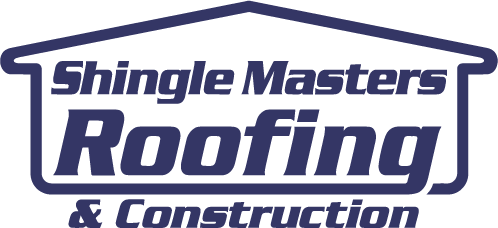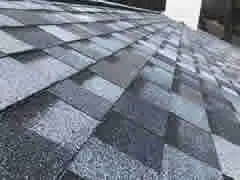Tampa Bay Roof Financing Costs ROI and Smart Programs
Financing a New Roof in Tampa Bay: Costs, ROI, and How to Use Available Programs Wisely
Last updated: September 23rd, 2025
Estimated reading time: 11 minutes
Key takeaways
- Balance upfront costs vs. long-term savings: Typical Tampa Bay asphalt shingle roofs run ~$11,000–$25,000, with potential offsets from energy savings, insurance discounts, and resale value.
- Total cost of ownership matters: Lifespan, maintenance, and repair risk differ across shingles, metal, and tile—and affect overall value.
- Florida code compliance pays: Wind-mitigated, code-compliant systems can qualify for significant homeowner’s insurance discounts.
- Compare financing offers: Ask about APR, term, fees, and weigh monthly payments against potential energy and insurance savings.
- Strong ROI potential: A new asphalt shingle roof can recoup 60%+ at resale per Remodeling magazine’s 2023 Cost vs. Value report.
Table of contents
- TL;DR
- What You Need to Know About Roof Financing & Costs
- How a Roof Replacement Works: Step-by-Step
- Cost, Timelines & Warranties for Tampa Roofs
- Local Tampa Bay Roofing Considerations
- When NOT to Do This / Common Mistakes to Avoid
- Navigating Insurance & Storm Damage Claims
- Why Choose ShingleMasters Roofing
- Glossary of Roofing Terms
- Get a Clear Plan for Your New Roof
- Sources
- Frequently Asked Questions
TL;DR
- Financing a new roof in Tampa, Florida, involves balancing the upfront cost—typically between $11,000 and $25,000 for asphalt shingles—against long-term savings from insurance discounts, lower utility bills, and a higher home resale value.
- The total cost of a roof includes not just materials and labor but also its expected lifespan, maintenance needs, and potential repair costs, which vary significantly between asphalt shingles, metal, and tile.
- Florida’s building codes and insurance landscape reward homeowners for installing wind-resistant roofing systems. A new, properly installed roof can qualify for significant discounts on your homeowner’s insurance premium through a wind mitigation inspection.
- Reputable roofing contractors, like ShingleMasters, offer financing options that allow you to manage the upfront cost. Always ask about interest rates, loan terms, and any associated fees before signing an agreement.
- When evaluating financing, compare the monthly loan payment to the combined potential savings from lower energy bills (with a well-ventilated, reflective roof) and reduced insurance premiums.
- A new roof offers a strong return on investment (ROI). According to Remodeling magazine’s 2023 Cost vs. Value report, a new asphalt shingle roof can recoup over 60% of its cost at resale.
What You Need to Know About Roof Financing & Costs
Financing a new roof in Tampa Bay is a strategic financial decision, not just an expense. A modern, code-compliant roof protects your home from hurricanes, lowers energy costs, and can significantly reduce your insurance premiums, offering a tangible return on investment that offsets the monthly loan payment.
Pro tip: Evaluate total cost of ownership—not just the bid price—by considering lifespan, maintenance, energy savings, and insurance discounts.
Homeowner’s Pre-Financing Checklist
- Get Multiple Estimates: Obtain at least three detailed, written estimates from licensed and insured local roofing contractors.
- Verify Contractor Credentials: Check for a valid Florida contractor license and proof of liability and worker’s compensation insurance.
- Review Your Insurance Policy: Understand your deductible and coverage for roof replacement, especially the clauses related to age and condition.
- Request a Wind Mitigation Report: Ask contractors if their proposed roof system will qualify for insurance discounts and how much you might save.
- Compare Financing Offers: Look at the Annual Percentage Rate (APR), loan term (length), and total cost of financing from different lenders or contractor programs.
- Check for Rebates: Inquire about federal tax credits for energy-efficient materials or state programs like My Safe Florida Home.
- Read the Fine Print: Ensure the contract specifies materials, scope of work, timeline, and warranty details before signing.
How a Roof Replacement Works: Step-by-Step
Understanding the roof replacement process helps you know what to expect when crews arrive. A typical project follows a clear, structured path from the initial call to the final sign-off.
- Tools & Materials: Roll-off dumpster for debris, tear-off shovels, nail guns, underlayment, shingles or tiles, flashing, vents, and safety harnesses.
- Who’s Involved: A project manager, the installation crew, a local building inspector, and you, the homeowner.
- Typical Duration: 2–5 days for a standard-sized home, depending on weather, complexity, and inspection schedules.
- Professional Inspection: A qualified roofer assesses your roof’s condition, identifies damage, measures dimensions, and checks for proper ventilation and structural integrity. This is when they gather the information needed for an accurate estimate.
- Detailed Estimate & Material Selection: You receive a written proposal outlining the scope of work, materials to be used (e.g., specific shingle type and manufacturer), and the total cost. You’ll choose your material type and color and sign the contract.
- Permitting & Scheduling: The contractor pulls the necessary permits from your local municipality (e.g., Hillsborough County, City of Tampa). Once the permit is issued, they order materials and schedule the installation.
- Site Preparation & Tear-Off: On day one, the crew protects your landscaping, siding, and windows with tarps. They then remove all old roofing materials down to the wood decking.
- Decking Inspection & Repair: With the old roof removed, the crew inspects the underlying wood deck for rot or damage, replacing any compromised sections to create a solid foundation for the new roof.
- Installation of New Roof System: The crew installs the new system layer by layer: drip edge, underlayment (the water-resistant barrier), and then the primary roofing material (shingles, metal panels, or tiles). They also install flashing, vents, and ridge caps.
- Inspections: Depending on local rules, a municipal inspector may need to review the work mid-project (e.g., after the underlayment is down) and/or after completion.
- Final Cleanup: The crew cleans the entire work site, including using magnetic rollers to pick up stray nails from your yard and driveway.
- Warranty & Final Payment: Once the project is complete and has passed final inspection, you’ll receive your workmanship and manufacturer warranty documents. The final payment is then made.
Cost, Timelines & Warranties for Tampa Roofs
The cost of your new roof depends heavily on the material you choose, the size and complexity of your roof, and the warranties included. A “lifetime” warranty typically refers to the period a homeowner owns their home and is prorated, so be sure to read the manufacturer’s terms.
A workmanship warranty covers installation errors and is provided by your contractor, while a material warranty covers defects in the roofing products themselves and is provided by the manufacturer.
Tampa Bay Roofing Material Comparison
| Material | Wind Rating (Typical) | Impact Class (Optional) | Typical Warranty | Typical Cost Range (per sq. ft. installed) |
|---|---|---|---|---|
| Architectural Shingles | 110–130 mph (ASTM D7158) | Class 3 or 4 (UL 2218) | 25–50 Years (Prorated) | $5.50 – $9.50 |
| Metal (Standing Seam) | 140+ mph | Class 4 | 40–50 Years | $10.00 – $18.00 |
| Clay/Concrete Tile | 130+ mph | Class 3 or 4 | 50+ Years | $12.00 – $25.00+ |
Note: Costs are estimates for planning purposes only and vary based on home size, roof slope, specific product, and labor rates. Verify all warranty, wind, and impact ratings with the specific manufacturer.
Local Tampa Bay Roofing Considerations
In Tampa, roofing isn’t just about keeping the rain out—it’s about protecting your home from hurricanes. Florida has one of the most robust building codes in the nation, and compliance is mandatory for your safety and insurance eligibility.
The Florida Building Code (FBC) dictates specific installation methods to resist high winds. While Tampa is not in the High-Velocity Hurricane Zone (HVHZ) like Miami-Dade, it must still meet stringent requirements for wind uplift. This includes specific nailing patterns for shingles, requirements for roof deck attachment, and the use of peel-and-stick underlayment to seal the roof deck.
You can verify permit requirements with your local authority:
- Hillsborough County: Building & Development Services
- City of Tampa: Construction Services Division
- Pinellas County: Building Services
- City of St. Petersburg: Building and Permitting
A key local factor is wind mitigation. A new roof installed to modern FBC standards can earn you significant discounts on your homeowner’s insurance. After installation, a licensed inspector can provide a Wind Mitigation Inspection Report (OIR-B1-1802) to your insurance carrier, which documents features like roof-to-wall attachment, sealed roof decks, and impact-rated materials.
When NOT to Do This / Common Mistakes to Avoid
Financing a new roof is a major decision, but rushing it can lead to costly mistakes. Be cautious of high-pressure sales tactics and offers that sound too good to be true.
- Do not sign a contract if it has blank spaces or you don’t understand the terms.
- Do not pay for the entire project upfront. A reasonable deposit is standard (e.g., 10-33%), but full payment should only be made upon satisfactory completion.
- Do not hire a contractor who cannot provide a copy of their Florida license and proof of insurance.
- Do not accept a verbal agreement. Get everything in writing, including the specific materials, timeline, and warranty information.
- Do not file an insurance claim for minor damage without first getting a professional opinion. Filing small claims can sometimes raise your premiums.
Navigating Insurance & Storm Damage Claims
If a storm damages your roof, a clear process can help you navigate the insurance claim smoothly. The key is thorough documentation and clear communication with your insurer and your contractor.
Here is the typical path for a storm damage claim:
- Document Damage: Safely take photos and videos of the roof damage and any interior leaks or property damage.
- Verify Coverage: Review your insurance policy to understand your deductible, what’s covered, and any exclusions.
- File a Claim: Call your insurance company to report the damage and open a claim. You will be assigned a claim number and an adjuster.
- Adjuster Visit: The insurance adjuster will schedule a visit to inspect the damage and estimate the cost of repairs based on their software.
- Scope of Work: The adjuster provides a “scope of work” detailing the approved repairs and the estimated cost. It’s wise to have your roofer review this to ensure nothing was missed.
- Supplements: If your contractor finds additional, necessary repairs not included in the initial scope, they will submit a “supplement” to the insurance company for approval.
- Repairs Begin: Once the scope and cost are agreed upon, you can authorize your contractor to begin the work.
- Depreciation Release: Most policies pay in two parts: the Actual Cash Value (ACV) upfront, and the Recoverable Depreciation after you submit proof that the work is complete.
Disclaimer: This is for informational purposes only and is not legal or insurance advice. Always verify coverage and procedures directly with your insurance carrier.
Your Insurance Verification Checklist
- What is my hurricane or named storm deductible?
- Does my policy cover the full replacement cost of my roof, or is it based on its actual cash value (depreciated value)?
- Are there any specific exclusions for wind or hail damage?
- What is the deadline for filing a claim after a storm event?
- Will my policy cover building code upgrades required during the repair?
- Do I need to use a contractor from your preferred network?
- What documentation do you need from me and my contractor to process the final payment?
Why Choose ShingleMasters Roofing
Navigating the complexities of roof financing, insurance claims, and Florida building codes is our specialty. At ShingleMasters, we believe an informed homeowner is a happy homeowner, which is why we prioritize transparency and education throughout the entire process.
We help you understand the long-term value of your investment, not just the initial cost.
- Transparent Estimates: Our detailed proposals break down all costs, so you know exactly what you’re paying for.
- Flexible Financing Options: We offer accessible financing programs to help you manage the cost of a new roof without draining your savings. Explore your options on our Financing page.
- Certified Installation: As certified installers for leading manufacturers, we can offer enhanced material warranties that other contractors cannot.
- Insurance Claim Assistance: We have extensive experience working with all major insurance carriers and can help you navigate the claims process to ensure a fair and complete settlement.
- Code Compliance Guaranteed: We handle all necessary permits and ensure your new roof meets or exceeds the latest Florida Building Code requirements for wind resistance.
- Commitment to Safety: Our crews are fully trained and insured, adhering to strict safety standards on every job site.
See our guide to roof replacement for more details on our process, or explore our storm damage repair services.
Glossary of Roofing Terms
- Underlayment: A water-resistant barrier installed between the roof decking and the primary roofing material (shingles, tiles). In Florida, this is often a “peel-and-stick” membrane for a sealed deck.
- Ridge Vent: An exhaust vent installed along the peak (ridge) of a roof that allows warm, moist air to escape from the attic, crucial for energy efficiency in hot climates.
- Class 4 Impact Rating: The highest rating for roofing materials against impact, determined by UL test 2218. A material rated Class 4 can withstand the impact of a 2-inch steel ball dropped from 20 feet without splitting.
- Ice & Water Shield: A type of self-adhering underlayment used to protect vulnerable areas like valleys and eaves from water intrusion. While named for ice, it is used in Florida for wind-driven rain protection.
- O&P (Overhead and Profit): A line item in insurance estimates (typically 10% overhead and 10% profit) that covers a general contractor’s operational costs. It is standard industry practice for complex projects requiring significant coordination.
Get a Clear Plan for Your New Roof
A new roof is one of the most important investments you can make in your Tampa Bay home. Don’t leave it to chance. Get a clear, transparent estimate and explore financing options that fit your budget.
Schedule your free, no-obligation inspection today to get an exact price and a personalized plan to protect your home.
If you only do 3 things…
- Request a Free Estimate: Understand your specific costs and options from a trusted professional.
- Ask About Wind Mitigation: Find out exactly how a new roof can lower your insurance premiums.
- Review Our Financing Options: See how an affordable monthly payment can make a new roof a reality today.
Sources
- Cost vs. Value 2023: South Atlantic Region — Remodeling / Zonda Media — 2023
- Florida Building Code, 8th Edition (2023) — Florida Building Commission / Codes.ICCsafe.org — 2023
- Wind Mitigation — Florida Division of Emergency Management
- Standard for Impact Resistance of Prepared Roof Covering Materials (UL 2218) — Underwriters Laboratories
- My Safe Florida Home Program — Florida Department of Financial Services
- GAF Roofing Warranties — GAF
Frequently Asked Questions
How long does a roof replacement in Tampa take?
A typical roof replacement on a standard-sized home in the Tampa Bay area takes about 2 to 5 days. This can be affected by the size and complexity of the roof, the type of material being installed, and unpredictable afternoon thunderstorms or delays in scheduling mandatory municipal inspections.
Can I finance a new roof with bad credit?
Financing options may be available for homeowners with various credit histories. While a higher credit score typically secures better interest rates, some lenders specialize in home improvement loans for individuals with lower scores. Reputable contractors often have relationships with multiple lenders to help you find a suitable option.
Is a metal roof worth the extra cost in Florida?
For many Florida homeowners, a metal roof is a worthwhile long-term investment. While more expensive upfront than asphalt shingles, metal roofs offer a longer lifespan (50+ years), superior wind resistance, excellent energy efficiency by reflecting solar heat, and are highly resistant to algae and decay, which can reduce maintenance costs over time.
How much can I save on insurance with a new roof?
Savings vary by carrier, location, and the specific features of your roof, but discounts can be substantial, often ranging from 15% to 40% off your homeowner’s insurance premium. A new roof installed to FBC standards with a sealed deck and proper attachments qualifies for significant wind mitigation credits.
Should I repair or replace my roof?
If your roof is relatively new and the damage is isolated to a small area, a repair may be sufficient. However, if the roof is over 15-20 years old, has widespread damage, or is experiencing persistent leaks in multiple locations, a full replacement is usually the more cost-effective and safer long-term solution.
What is a “sealed roof deck” and why does it matter?
A sealed roof deck is a layer of self-adhering waterproof underlayment applied directly to the wood decking of your roof. It is a requirement of the Florida Building Code and acts as a secondary water barrier. If high winds were to blow off your primary roofing material, this layer would prevent water from entering your home, making it a critical feature for hurricane protection and insurance discounts.



